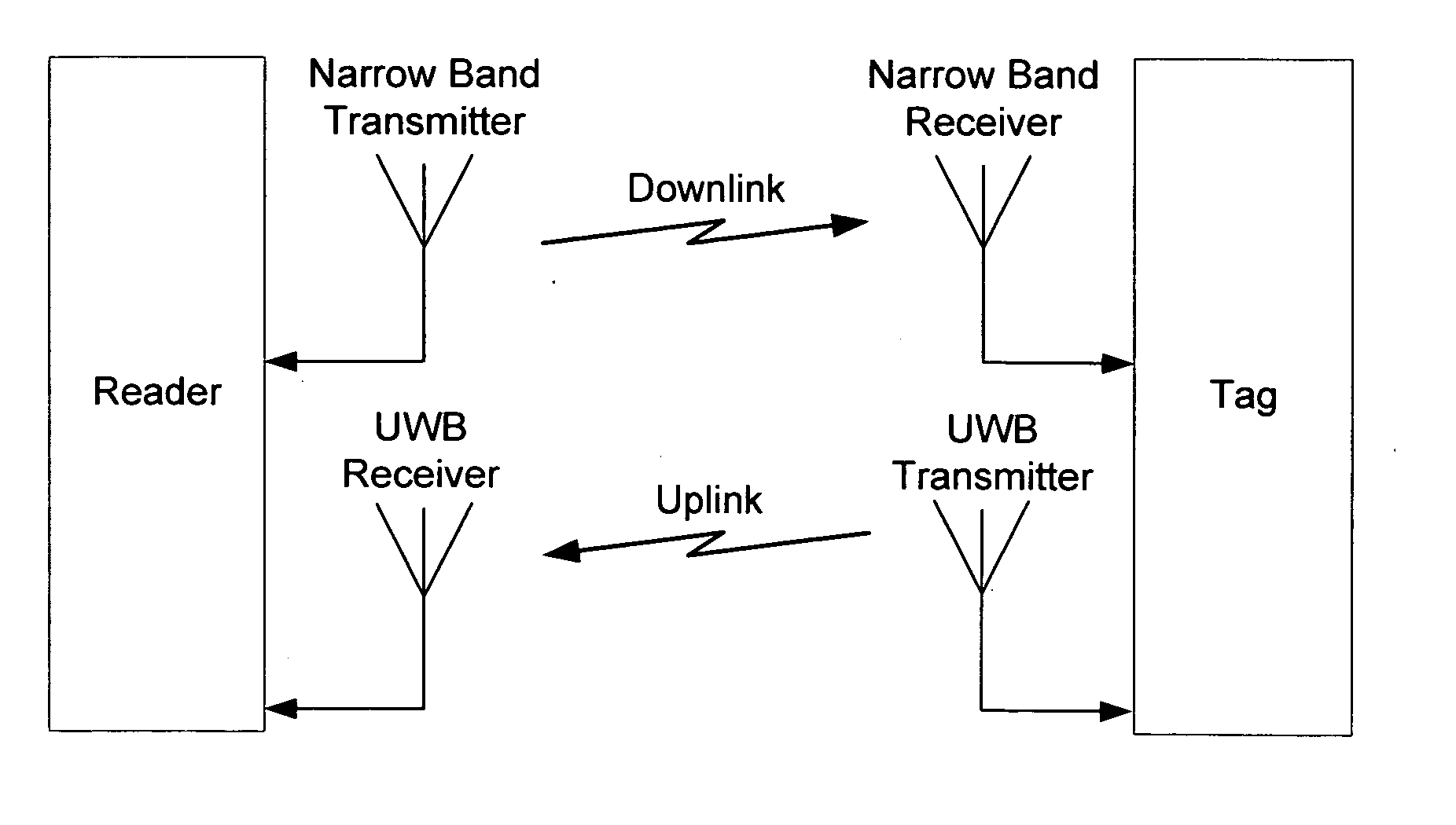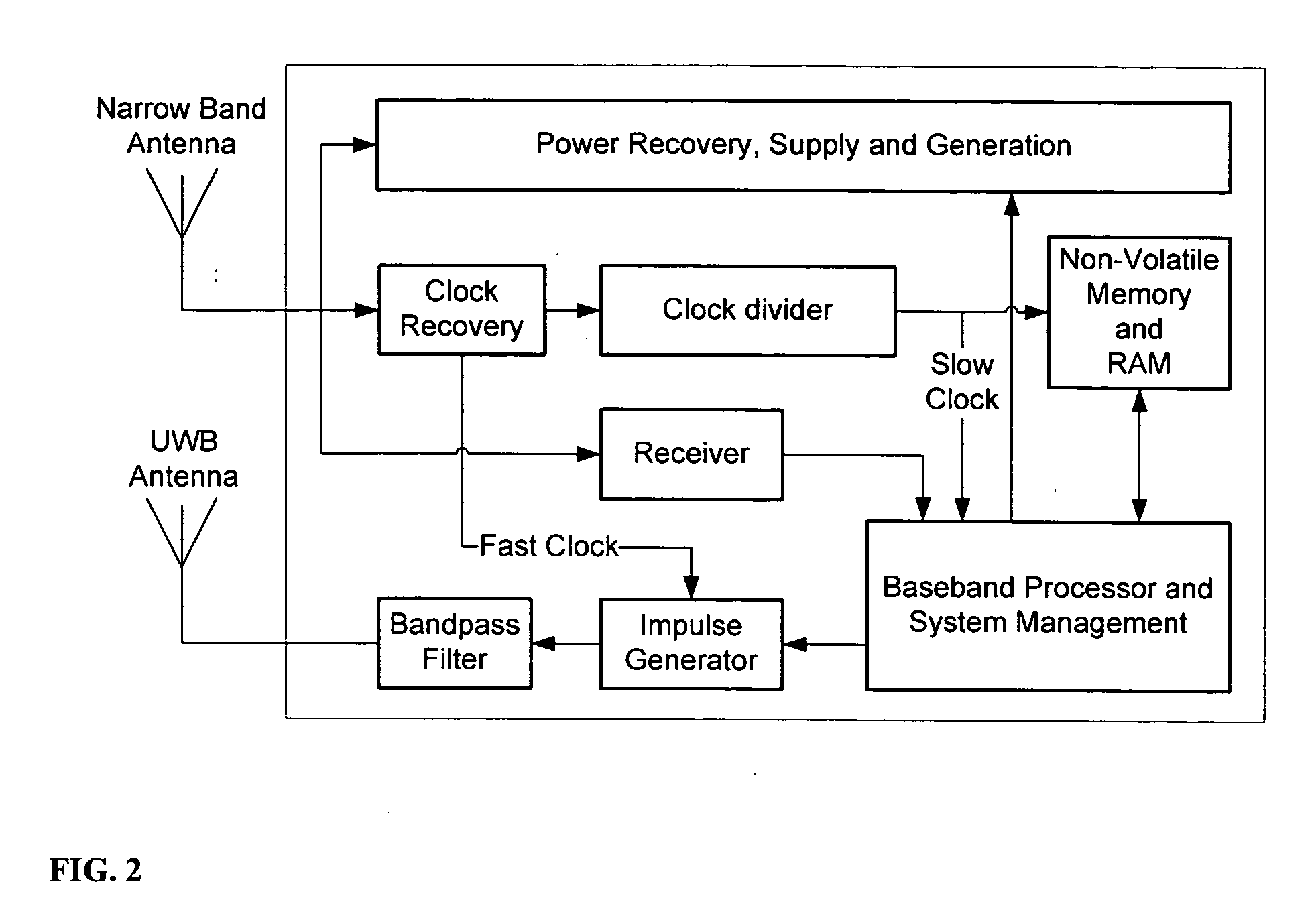Radio frequency tag and reader with asymmetric communication bandwidth
a radio frequency tag and communication bandwidth technology, applied in instruments, sensing record carriers, computing, etc., can solve problems such as penetration and reflection, pollute the rf spectrum, and currently available narrow band rfid technologies suffer, and achieve low power and high data rate
- Summary
- Abstract
- Description
- Claims
- Application Information
AI Technical Summary
Benefits of technology
Problems solved by technology
Method used
Image
Examples
Embodiment Construction
[0036] As illustrated in FIG. 1, the invented reader uses narrow band channels to interrogate the tag. This direction of communication is called a downlink communication. The used band can be in any portion of the spectrum where radio communication is possible. The receivers of these narrowband signals, i.e. the tags, transmit their responses back to the readers in a stream of UWB impulses. The direction of communication in this case is called uplink (see FIG. 1). This means that each reader uses at least a narrowband transmitter and a UWB receiver, while each tag utilizes a UWB transmitter and a narrowband receiver. This asymmetric utilization of the bandwidth, which is the core of this invention, has many benefits, among them: [0037] A UWB transmitter is very simple, low power, easy to design and cheap. This is true for a narrowband receiver as well. By deploying these two simplest combinations of the UWB and narrowband technologies, the tag which is the most critical element of a...
PUM
 Login to View More
Login to View More Abstract
Description
Claims
Application Information
 Login to View More
Login to View More - R&D
- Intellectual Property
- Life Sciences
- Materials
- Tech Scout
- Unparalleled Data Quality
- Higher Quality Content
- 60% Fewer Hallucinations
Browse by: Latest US Patents, China's latest patents, Technical Efficacy Thesaurus, Application Domain, Technology Topic, Popular Technical Reports.
© 2025 PatSnap. All rights reserved.Legal|Privacy policy|Modern Slavery Act Transparency Statement|Sitemap|About US| Contact US: help@patsnap.com



